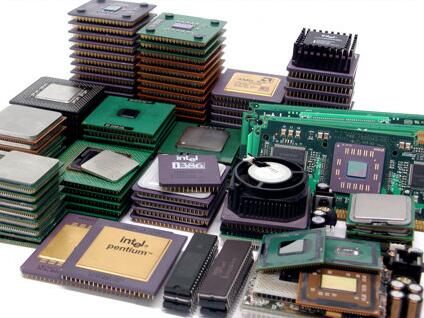The Mother of All CPU Charts Part 1
Introduction
UPDATE: MARCH 22, 2005:
Check out our overview of CPU history in Part 1, with Part 2 detailing AMD's path to Athlon64, plus 3,300 benchmarks for CPUs since 1995. Now, we've updated the benchmarks to include the Intel Pentium 600 series and Extreme Edition .
From 1995 To 2005: 116 CPUs From 100 MHz To 3800 MHz
Ladies and gentlemen, fasten your seatbelts, because here we go. After 12 weeks of grueling and meticulous testing in our Munich THG lab, our biggest CPU test of all time is complete. Marathon, all-night monitoring sessions, system hiccups and crashes and the logistics involved in coordinating such a feat often short-circuited our caffeine-addled nerves. But then again, this project was about more than just tallying up CPU benchmarks. Indeed, it was fascination (or was it an obsession?) with the course taken by CPU technology in the past 11 years that motivated THG to conduct a comparative test of this magnitude. In Part 1 of this series, we take a look at the beginnings of the CPU and move up through the very latest from Intel. Tomorrow, we continue with a focus on AMD's development in history, and bring you the results of our benchmark tests as well.
Many readers still remember the days when a PC system with Pentium 100 and 16 MB memory was "state of the art" and counted as the ultimate equipment for an enthusiastic student. That was in 1994, when this computer sold for just under $3000. Today the ex-student may work in an IT company or has his own company and makes decisions on investments. How times change.
Overall, 116 different processors dating from 1995 to today are being subjected to a uniform, comprehensive testing procedure. This monster comparison can be seen as a journey through time that very clearly reflects how brilliantly the performance of chips and, ultimately, of PC systems has changed over a very short period. But performance is not the only thing that many users take for granted when spending their money. What is not visible to many are is the multitude of technical changes that components and standards have undergone. The test will provide insights into this topic as well.
Starting with the CPU platforms - from Socket 5 from 1995 to the current Socket 775 - no less than seven different evolutionary stages were observed in the case of processor manufacturer Intel alone. During the same period, AMD launched five platforms, from Socket 7 to Socket 939.
With subdued pride, we can state that this is the most comprehensive CPU comparison and benchmark marathon on the Internet. The reader will be able to directly compare the performance of a total of 116 processors and analyze them relying on 3,330 benchmark values in various testing categories. Above all, users who entertain the idea of replacing their old PC system with a new one will see exactly what kind of performance increase they can expect in practice. This is possible - even though over the years the PC's architecture has been transformed with respect to memory, chipset and platform - because we did all of our benchmark tests using WindowsXP.
Get Tom's Hardware's best news and in-depth reviews, straight to your inbox.
Tom's Hardware is the leading destination for hardcore computer enthusiasts. We cover everything from processors to 3D printers, single-board computers, SSDs and high-end gaming rigs, empowering readers to make the most of the tech they love, keep up on the latest developments and buy the right gear. Our staff has more than 100 years of combined experience covering news, solving tech problems and reviewing components and systems.
-
Rare Intel Pentium P5 wafer with chips:Reply
http://www.chipsetc.com/intel-journey-inside-educational-chip-kits.html

